Chapter 1 Numbers and Operations
Exercise 1
1. 10 is a natural number, a whole number, an integer, a rational number, and a real number.
2. −7.3 is a rational number and a real number.
3. −74 is an integer, a rational number, and a real number.
4. −1,000 is an integer, a rational number, and a real number.
5. 0.555 ... is a rational number and a real number.
6.  is a rational number and a real number.
is a rational number and a real number.
7.  is a rational number and a real number.
is a rational number and a real number.
8. 0 is a whole number, an integer, a rational number, and a real number.
9.  is an irrational number and a real number.
is an irrational number and a real number.
10. Undefined
11. 0
12. Undefined
13. Distributive property
14. Zero factor property
15. Associative property of multiplication
Chapter 2 Integers
Exercise 2
1. |−45| = 45
2. |58| = 58
3. |−5| = 5
4. “Negative nine plus the opposite of negative four equals negative nine plus four.”
5. “Negative nine minus negative four equals negative nine plus four.”
6. −80 + −40 = −120
7. 
8. (−100)(−8) = 800
9. 
10. −458 + 0 = −458
11. 4(−3)(0)(999)(−500) = 0
12. 
13. 
14. 
15. 
16. (−3)(1)(−1)(−5)(−2)(2)(−10) = −600
17. (−3)(1)(−1)(−5)(−2)(0)(−10) = 0
18.

19.

20.

Chapter 3 Exponents
Exercise 3
1. “six to the fifth”
2. “negative five to the fourth”
3. “four to the zero”
4. “negative nine squared”
5. (−4)(−4)(−4)(−4)(−4) = (−4)5
6. 8 × 8 × 8 × 8 × 8 × 8 × 8 = 87
7. 28 = 2 × 2 × 2 × 2 × 2 × 2 × 2 × 2 = 256
8. 54 = 5 × 5 × 5 × 5 = 625
9. (−4)5 = (−4)(−4)(−4)(−4)(−4) = −1,024
10. 09 = 0
11. (−2) = 1
12. 0−4 is the notation for  or
or  , which is undefined.
, which is undefined.
13. 
14. 
15. 
Chapter 4 Order of Operations
Exercise 4
1. 
2. 
3. 
4. 
5. 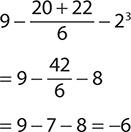
6. 
7. 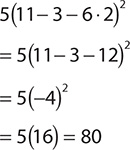
8. 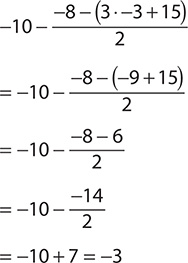
9. 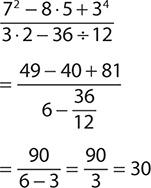
10. 
11. 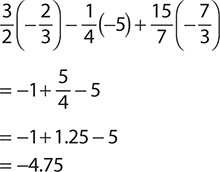
Chapter 5 Fractions
Exercise 5
1. 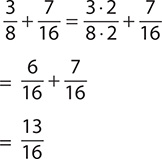
2. 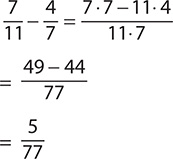
3. 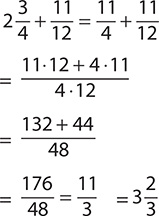
4. 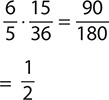
5. 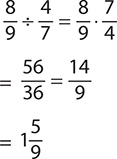
6. 
7. 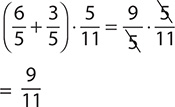
8. 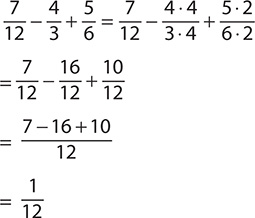
9. 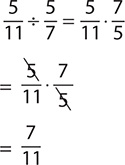
10. 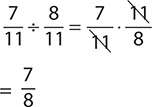
11. 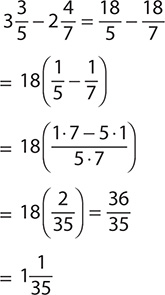
12. 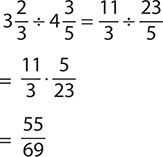
Chapter 6 Decimals
Exercise 6
1. 
2. 
3. Prediction: Five places

4. Prediction: Six places

5.

Answer: 11.05 (using a calculator)
6. 
Answer: 8.1 (using a calculator)
7. Divide 2.917 by 0.37 and round to three places

Answer: 7.884 (using a calculator)
8. Multiply 6.678 by 0.37 and round to two places
Answer: 2.47 (using a calculator)
9. Divide 3.977 by 0.0372 and round to three places

Answer: 106.909 (using a calculator)
10. Multiply 45.67892 by 0.0374583 and round to four places
Answer: 1.7111 (using a calculator)
Chapter 7 Percents
Exercise 7
1. 
2. 
3. 
4. 
5. 
6. 
7. 
8. 
9. 
10. 
11. 
12. 
13. 
14. 
15. 
Chapter 8 Units of Measurement
Exercise 8
1. 
2. 
3. 
4. 
5. 
6. 
7. 
8. 
9. 
10. 
11. 
12. 
13. 
14. 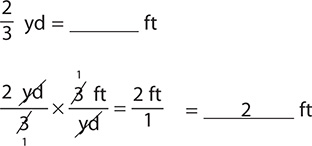
15. Compare:  to
to  .
.
The better buy is 9 oz for $4.99.
16. 250 m ÷ 103 (three moves left) = 250 m ÷ 1,000 = 0.25 km
17. 
The package weighs 60 oz.
18. 
19. 
20. 
21. The thermometer is reading four tick marks above 10°. Since each interval between tick marks represents 1°, the thermometer is reading 4° above 10°, which is 14°C.
Chapter 9 Ratios and Proportions
Exercise 9
1.  because both are in the same units
because both are in the same units
2. 
3. 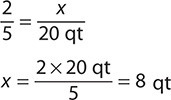
4. 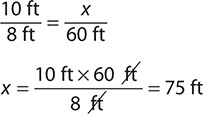
5. 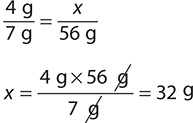
6. 
7. Let w = the number
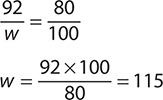
8. Let p = the part
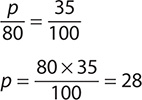
9. You will earn only one-half of a year’s interest.
Let A = the amount you will earn. Then  is the amount of interest you will earn in 6 months.
is the amount of interest you will earn in 6 months.
10. 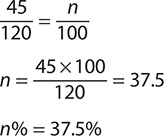
11. 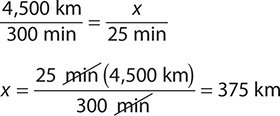
12. 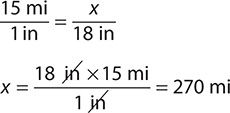
13. 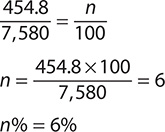
14. 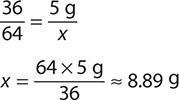
Chapter 10 Roots and Radicals
Exercise 10
1. 12 × 12 = 144 and −12 × −12 = 144
Thus, 12 and −12 are the two square roots of 144.
2.  and
and 
Thus,  and
and  are the two square roots of
are the two square roots of  .
.
3. 0.8 × 0.8 = 0.64 and −0.8 ×−0.8 = 0.64
Thus, 0.8 and −0.8 are the two square roots of 0.64.
4. 20 × 20 = 400 and −20 × −20 = 400
Thus, 20 and −20 are the two square roots of 400.
5. 6 × 6 = 36, so 6 is the positive square root of 36.
Thus,  .
.
6. −9 is a negative number; square roots of negative numbers are not real numbers.
Thus,  is undefined for the set of real numbers.
is undefined for the set of real numbers.
7.  , so
, so  is the positive square root of
is the positive square root of  .
.
Thus, 
8. 
13 × 13 = 169, so 13 is the positive square root of 169.
Thus,  .
.
9. −2 × −2 × −2 = −8
Thus,  .
.
10. 
Thus, 
Chapter 11 Algebraic Expressions
Exercise 11
1. The variable is s, and the constant is 4.
2. The numerical coefficient is −12.
3. The numerical coefficient is 1.
4. The numerical coefficient is  .
.
5. −5x = −5(9) = −45
6. 2xyz = 2(9)(−2)(−3) = 108
7. 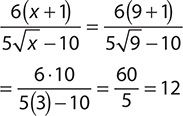
8. 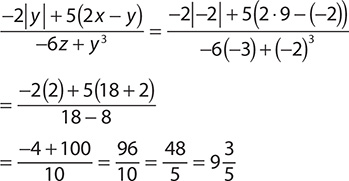
9. 
10. 
11. 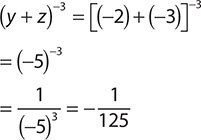
12. 
13. 
14. 12 + (x2 + y) = 12 + x2 + y
15. 8 − (2x − 4y) = 8 − 2x + 4y
Chapter 12 Formulas
Exercise 12
1. 
2. P = 4s = 4(10 m) = 40 m
3. 
4. A = 15 ft × 6 ft = 90 ft2
5. 
6. A = πr2 ≈ (3.14)(5 yd)2 = (3.14)(25 yd2) = 78.5 yd2
7. V = πr2h = (3.14)(10 ft)2 (30 ft) = (3.14)(l00 ft2)(30 ft) = 9,420 ft3
8. 
9. 
10. 
Chapter 13 Polynomials
Exercise 13
1. x2 − x + 1 is a trinomial.
2. 125x3 − 64y3 is a binomial.
3. 2x2 + 7x − 4 is a trinomial.
4.  is a monomial.
is a monomial.
5. 2x4 + 3x3 − 7x2 − x + 8 is a polynomial.
6. −15x + 17x = 2x
7. 14xy3 − 7x3y2 is simplifed.
8. 10x2 − 2x2 − 20x2 = −12x2
9. 10 + 10x is simplifed.
10. 
11. 12x3 − 5x2 + 10x − 60 + 3x3 − 7x2 − 1 = 15x3 − 12x2 + 10x − 61
12. 
13. 
14. 
15. 
Chapter 14 Solving Equations
Exercise 14
1. 
2. 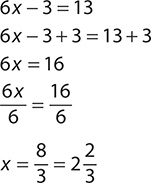
3. 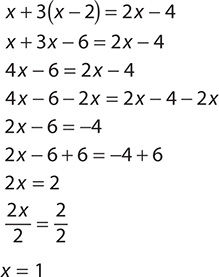
4. 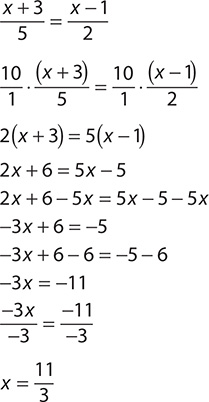
5. Two more than three times a number x = four less than six times the number x.
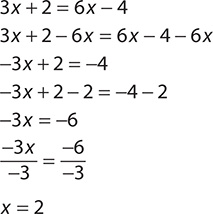
6. 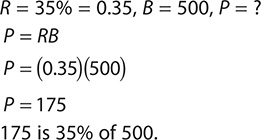
7. 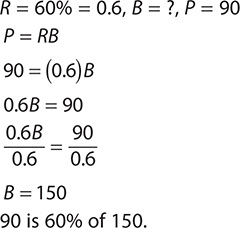
8. 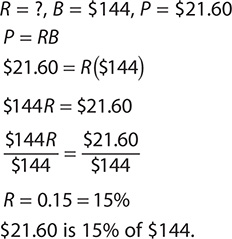
9. 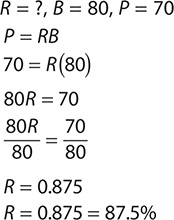
The student’s percent grade is 87.5%.
10. 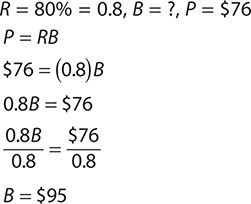
The regular price of the shirt is $95.
Chapter 15 Informal Geometry
Exercise 15
1. Yes, the size and shape appear to be the same.
2. No, the size is about the same but the shape is different.
3. No, the size is different.
4. Yes, the shape is the same.
5. Yes, the shape is the same.
6. No, the shape is different.
7.
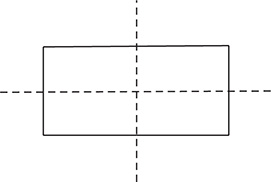
Dashed lines are lines of symmetry.
8. The figure does not have line symmetry.
9. Acute, because 50° is between 0° and 90°
10. Right, because the angle is exactly 90°
11. Obtuse, because 130° is between 0° and 180°
12. Intersecting
13. Parallel
14. Hexagon, because it has exactly six sides
15. Heptagon, because it has exactly seven sides
16. Isosceles, because it has two congruent sides
17. Equilateral, because it has three congruent sides
18. Acute triangle, because it has three acute angles
19. Obtuse triangle, because it has one obtuse angle
20. Right triangle, because it has one right angle
21. Parallelogram, because opposite sides are congruent and parallel
22. Rectangle, because it is a parallelogram that has four right angles
23. Trapezoid, because it has exactly one pair of parallel sides
24. The length of the diameter is 2 × 5.4 yd = 10.8 yd.
25. Rectangular prism, because it has two parallel and congruent rectangular bases and rectangles for sides
26. Cylinder, because it has two parallel congruent bases, which are circles, and it has one rectangular side that wraps around
27. A square or rectangular pyramid, because it is a solid with exactly one base, triangular sides, and a square base
28. Sphere, because it is a three-dimensional solid that is shaped like a ball
29. Triangular pyramid, because it is a solid with exactly one base, triangular sides, and a triangular base
30. Pentagonal prism, because it has two parallel and congruent pentagonal bases and rectangles for sides
Chapter 16 Perimeter, Area, and Volume
Exercise 16
1. 
2. The area of the floor is 20 ft × 30 ft = 600 ft2. Because the tiles are each of size 12 in × 12 in = 1 ft × 1 ft = 1 ft2, 600 tiles are needed.
3.
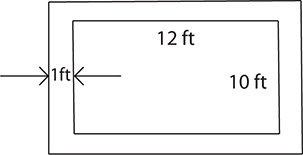
The size of the complete region is (12 ft + 1 ft + 1 ft) = 14 ft by (10 ft + 1 ft + 1 ft) = 12 ft, so the area A = 14 ft × 12 ft = 168 ft2.
4. The area of the rectangle is Ar = 4 ft × 9 ft = 36 ft2. Because the square has the same area, the side of the square is  .
.
5.
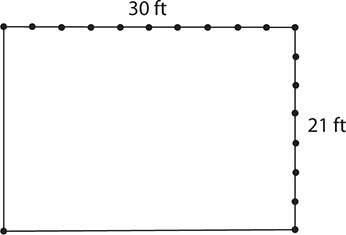
The perimeter P = 2 × 30 ft + 2 × 21 ft = 102 ft. Dividing 102 ft by 3 ft between each post gives 34. Thus, 34 posts are needed.
6. A = πr2 ≈ 3.14(10 ft)2 = 3.14(100 ft2) = 314 ft2
7. 
8. a. 
b. The number of bushels is 
c. The value of the wheat in the full silo is 
9. 
10.  cubic units
cubic units
11. Find the surface area of the box.
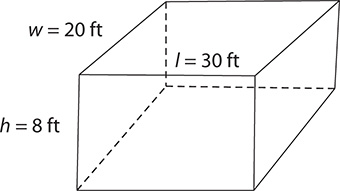
Sum the areas of the faces.
S.A. = 2(8 ft)(30 ft) + 2(20 ft)(30 ft) + 2(8 ft)(20 ft) = 2,000 ft2
Chapter 17 Pythagorean Theorem
Exercise 17
1. 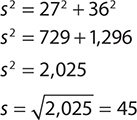
2. 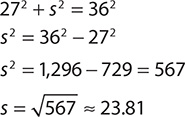
3. 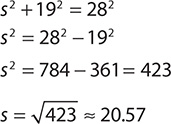
4. 
5. 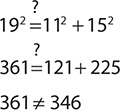
The triangle is not a right triangle.
6. The required area is the area of the semicircle minus the area of the triangle. Let A be the area of the semicircle and let T be the area of the triangle. Then, to find the area of the semicircle, the radius length must be known. The diameter and thus the radius can be found by using the Pythagorean theorem on the right triangle. Let d be the length of the diameter.


The radius is 
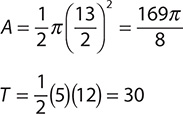
The required area is 
7. 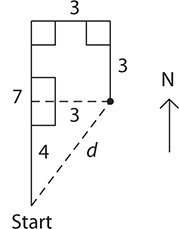
d2 = 32 + 42 = 25
d = 5
(The triangle in this figure is the special 3-4-5 triangle. Any triangle similar to this triangle has proportional side lengths, such as the 27-36-45 triangle of problem 1 earlier.)
8. The length of the sides of the square is needed for the perimeter. You can use the Pythagorean theorem to find the side length. Let s be the side length and let P be the perimeter. 32
s2 + s2 = 32
2s2 = 32
s2 = 16
s = 4
P = 4s = 4 × 4 = 16 units
9. Because 4 is the largest number, the question is
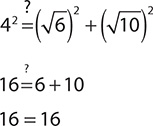
The triangle is a right triangle.
10. 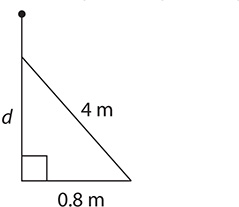
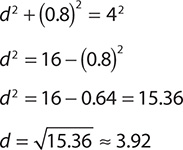
The ladder will reach up on the wall approximately 3.92 m.
Chapter 18 Counting and Probability
Exercise 18
1. no. of ways to select one door and one curtain = (no. of ways to select a door) × (no. of ways to select a curtain) = 3 × 4 = 12 different ways
2. no. of codes possible = (no. of ways to select first letter) × (no. of ways to select second letter) × (no. of ways to select third letter) = 15 × 15 × 15 = 3,375 different codes
3. no. of ways to select one bread, one sandwich filling, one bag of chips, and one drink = (no. of ways to select a bread) × (no. of ways to select a sandwich filling) × (no. of ways to select a bag of chips) × (no. of ways to select a drink) = 3 × 4 × 2 × 3 = 72 different lunches
4. 
5. 
6. 
7. 
8. 
9. The events are independent, so 
10. The events are independent, so 
Chapter 19 Mean, Median, Mode, and Range
Exercise 19
1. 
2. 
3. 
4. 
5. 
6. median = 30
7. 
8. 
9. median = 3
10. median = 4
11. no mode
12. mode is −4; unimodal
13. modes are 4.7 and 5.6; bimodal
14. mode is 3; unimodal
15. modes are 4, and 10; bimodal
16. range = 50 − 0 = 50
17. range = 25 − (−4) = 25 + 4 = 29
18. range = 7.3 − 2.5 = 4.8
19. range = 16 − (−10) = 16 + 10 = 26
20. range = 500 − 0 = 500
Chapter 20 Graphical Representation of Data
Exercise 20
1. According to the graph, 50 of the 200 women responded “No” to the survey question posed.
2. According to the graph, the median annual earnings of all full-time, year-round workers, ages 25–34, with a bachelor’s or higher degree was $53,800 in the year 2015.
3. According to the graph, 29,900 (= 65% × 46,000) students enrolled at University X are freshmen or sophomores.
4. According to the graph, the small online business produced the least annual profit in 2015.
5. According to the graph, 13 of the 25 guests who attended the fundraiser for the local PAWS dog shelter were over 40 years old.
6. According to the graph, 60 of the 100 ninth-grade boys are at least 64.5 inches tall.
7. According to the graph, 10 of the 20 third graders read independently for less than 15 minutes during free time in class.